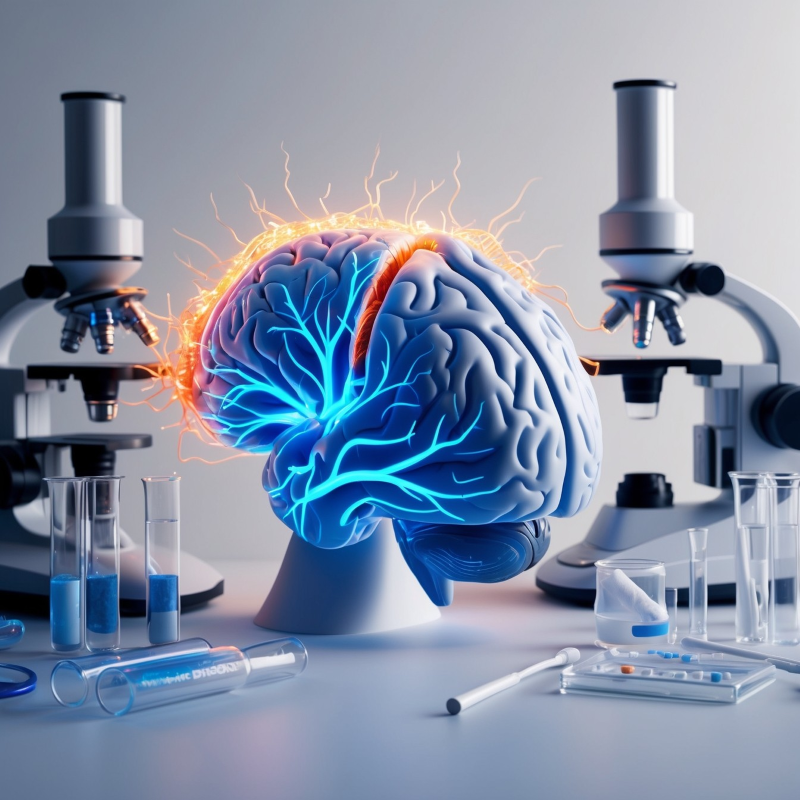Targeting Alpha-Synuclein in Parkinson’s

Introduction
Recent research has unveiled promising strategies to treat Parkinson’s disease (PD), focusing on targeting alpha-synuclein clumping and its transmission between brain cells. Understanding the role of cell surface proteins like Aplp1 and Lag3 in alpha-synuclein spread has led to the possibility of repurposing existing FDA-approved drugs to slow disease progression. This blog post explores the intricate mechanisms of alpha-synuclein clumping, its impact on Parkinson’s progression, and the therapeutic potential of targeting Aplp1 and Lag3.
What is Alpha-Synuclein?
Alpha-synuclein is a naturally occurring protein that helps maintain normal communication between neurons. It’s found mainly at presynaptic terminals, where it regulates neurotransmitter release. In Parkinson’s, however, this protein becomes misfolded and insoluble, leading to harmful clumps called Lewy bodies.
- Alpha-Synuclein’s Role in PD:
- Under normal conditions, alpha-synuclein is soluble and facilitates synaptic functions.
- When misfolded, it forms insoluble aggregates that disrupt normal cellular processes.
- These aggregates are found in Lewy bodies, which are pathological markers of Parkinson’s disease.
- Lewy Bodies and Parkinson’s Progression:
- Lewy bodies accumulate in the substantia nigra, a brain region crucial for dopamine production and motor control.
- As dopamine-producing neurons are damaged by these aggregates, Parkinson’s motor symptoms begin to manifest, including tremors, rigidity, and bradykinesia.
- Non-motor symptoms like cognitive decline, sleep disturbances, and psychiatric issues are also linked to alpha-synuclein pathology.
Cell-to-Cell Transmission of Alpha-Synuclein
One of the major discoveries in Parkinson’s research is how alpha-synuclein can spread between neurons, similar to prion diseases. This spread exacerbates disease progression and leads to widespread neuronal damage.
- How Does Alpha-Synuclein Spread?
- Misfolded alpha-synuclein can induce misfolding in neighboring cells, allowing the aggregates to propagate throughout the brain.
- Proteins like Aplp1 and Lag3 facilitate this transmission, making them key targets for therapeutic intervention.
- The Role of Aplp1 and Lag3:
- Both Aplp1 and Lag3 help neurons internalize alpha-synuclein. While they can work independently, they have a more significant impact when combined.
- Recent experiments with genetically modified mice lacking Aplp1, Lag3, or both showed that alpha-synuclein uptake was reduced by 90% when both proteins were absent, indicating their central role in disease progression.
Repurposing FDA-Approved Drugs
Excitingly, researchers found that the FDA-approved cancer drug nivolumab/relatlimab, which contains a Lag3 antibody, can block the interaction between Aplp1 and Lag3.
- Study Results:
- When administered to mice, the drug significantly reduced alpha-synuclein clumping and its transmission to healthy neurons.
- This approach proved more effective than simply deleting Lag3, as it also disrupted Aplp1’s association with alpha-synuclein.
- Therapeutic Implications:
- By preventing the spread of alpha-synuclein, drugs targeting Aplp1 and Lag3 could slow down or halt Parkinson’s progression.
- This strategy offers hope for developing treatments that preserve dopaminergic neurons and delay the onset of severe motor symptoms.
Conclusion
Addressing alpha-synuclein clumping at multiple levels—misfolding, aggregation, and cell-to-cell transmission—offers a comprehensive approach to slowing Parkinson’s progression. The focus on proteins like Aplp1 and Lag3 provides novel, actionable targets that could be leveraged using already-approved therapies, potentially accelerating the path to effective treatments.
Alpha-synuclein plays a crucial role in the spread and progression of Parkinson’s disease through several mechanisms:
Cell-to-Cell Transmission
Alpha-synuclein has the ability to travel between brain cells, propagating the disease throughout the brain:
- Prion-like Behavior: Misfolded alpha-synuclein can induce normal alpha-synuclein in neighboring cells to misfold and aggregate, similar to prion proteins1.
- Multiple Transmission Pathways: Alpha-synuclein can spread through various routes, including synaptic connections between neurons and release into the extracellular space1.
Formation of Toxic Aggregates
Alpha-synuclein forms harmful clumps that damage brain cells:
- Lewy Bodies: Misfolded alpha-synuclein aggregates into toxic structures called Lewy bodies, which are characteristic of Parkinson’s disease1.
- Neuronal Death: As these aggregates accumulate, they cause the death of dopamine-producing neurons, leading to the motor symptoms of Parkinson’s1.
Immune System Involvement
The immune system plays a role in the spread of alpha-synuclein pathology:
- Gut-Brain Axis: Inflammation in the intestine can accelerate alpha-synuclein accumulation and subsequent spread to the brain, potentially through the vagus nerve2.
- Microglial Activation: Alpha-synuclein oligomers can activate microglia, the brain’s immune cells, which may then contribute to the propagation of pathology throughout the brain2.
Protein Interactions
Alpha-synuclein interacts with other proteins to facilitate its spread:
- Aplp1 and Lag3: These cell surface proteins work together to enable healthy brain cells to absorb traveling clumps of alpha-synuclein, leading to cell death and disease progression3.
- Potential Therapeutic Target: Blocking the interaction between Aplp1 and Lag3 could potentially slow the spread of alpha-synuclein and disease progression3.
Progressive Nature
The spread of alpha-synuclein explains the progressive nature of Parkinson’s disease:
- Gradual Spread: Alpha-synuclein pathology typically starts in one region and gradually spreads to interconnected brain areas over time1.
- Variable Susceptibility: Different brain regions show varying susceptibility to alpha-synuclein accumulation, which may explain the diverse symptoms and progression patterns seen in Parkinson’s disease1.
Understanding these mechanisms of alpha-synuclein spread is crucial for developing targeted therapies to slow or halt the progression of Parkinson’s disease. Current research is exploring ways to interrupt this spread, such as using antibodies to intercept misfolded alpha-synuclein or targeting the proteins involved in its cell-to-cell transmission
AI-generated medical content is not a substitute for professional medical advice or diagnosis; I hope you found this blog post informative and interesting. www.parkiesunite.com by Parkie
DALL-E Prompt: Watercolor illustration depicting recent breakthroughs in Parkinson’s research. The scene should show scientists working in a laboratory, focusing on cell-to-cell transmission of alpha-synuclein and two key proteins, Aplp1 and Lag3. Include visual elements like neurons, protein structures, and a representation of a potential drug treatment blocking alpha-synuclein clumping. The mood should be hopeful, emphasizing progress in Parkinson’s treatment.
SEO Keywords: Parkinson’s treatment, alpha-synuclein, Aplp1, Lag3, neurodegenerative diseases